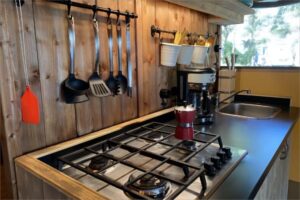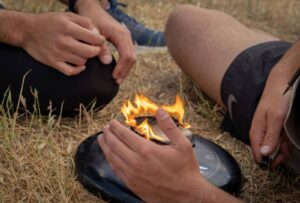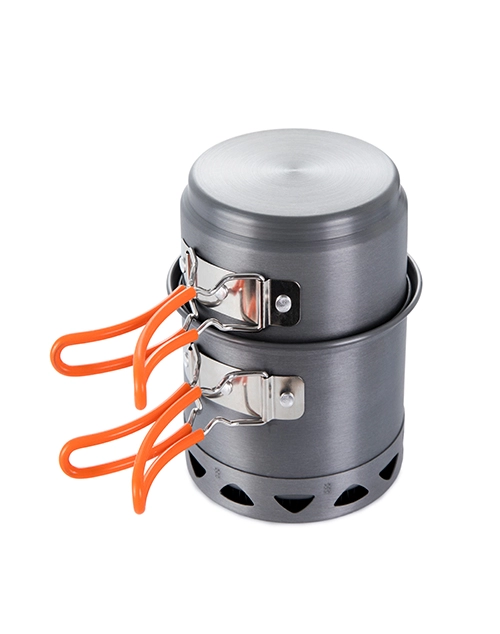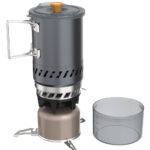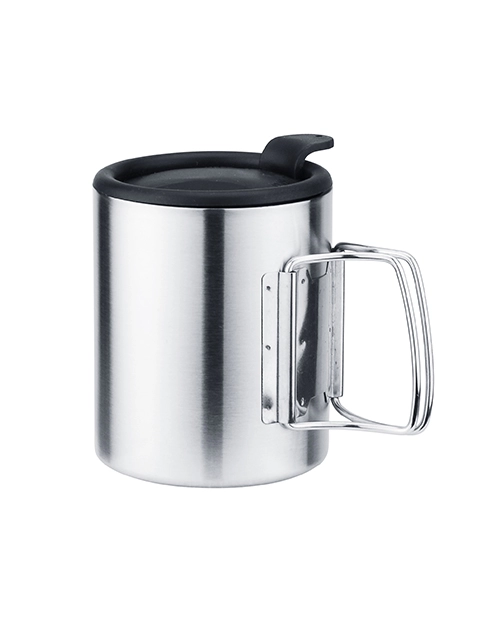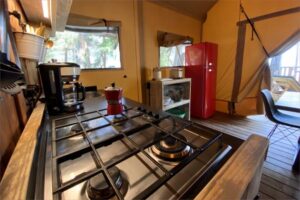
How does your gas burner work?
Gas burners accept an air-gas combination delivered by the main gas line. A gas valve is usually attached to a gas stove and distributes the air-gas mixture to each burner.
Older gas burners had a pilot light. However, modern gas burners have a little spark pilot positioned on each burner’s side. The burner is a tiny ceramic disk with holes through which the air-gas combination flows. When the spark or pilot is ignited, the gas ignites and flows through the holes in the burner. The airflow is then adjusted using a knob on the front of the stove, allowing you to produce more or less flame as desired.
How often should you clean a gas burner?
Once a year, you should clean your gas burner. When cleaning the inside of their oven, many people prefer to clean their burners as well. However, a good time to clean your burners is when you see the flame weakening. A faint flame indicates that the ports or burners are blocked and need to be cleaned.
The steps for cleaning a gas stove burner are outlined below. Take your time and consult your owner’s handbook if needed.
How to clean your gas stove burner?
STEP 1. REMOVE THE BURNER CAP AND BURNER BASE
Make sure the gas stove top is cold to the touch and the appliance is disconnected before removing the burner cap or burner base. Then simply remove the grates and take the burner top off. To remove the screws from some burner bases, you may need to use a screwdriver. Remove the screws if required, then gently raise the base and separate the cables. If your model has a standing pilot light, switch off the gas valve before removing any parts.
STEP 2. CLEAN THE BURNER CAP AND BASE
When cleaning the burner caps and base, use a non-abrasive plastic scouring pad and a mildly abrasive cleanser. To clean certain sections of your gas stove top, use the following tips:
- Clean the cooktop as soon as the surface, grates, and caps have cooled after cooking.
- Do not clean burner caps in the oven during a Self-Cleaning cycle.
- Do not wash burner caps in the dishwasher.
STEP 3. CLEAN THE GAS TUBE OPENING UNDER THE BASE
To reach the gas tubing, you may need to remove your stove surface. These tubes are situated under the burner base and connect to the gas valve.
Once identified, disconnect the tube from the base and use a straight pin, needle, or tiny gauge wire to clean any debris in the tube hole carefully. Take care not to damage the tube in the process.
Reattach the tube to the base and reinstall the cooktop surface after cleaning.
STEP 4. GENTLY CLEAN THE IGNITER WITH A DAMP CLOTH
The igniter is a tiny port beneath the burner’s base. Using a wet cloth, gently remove any debris from the igniter.
STEP 5. CLEAN CLOGGED BURNER PORTS
Clean blocked burner ports with a straight pin, needle, or small gauge wire. Avoid performing the following to clean the ports properly:
- Do not attempt to clean the dishwasher’s burner ports.
- Do not extend or deform the port in any way.
STEP 6. REINSTALL THE BURNER BASE AND CAP
Reattach the burner base with screws if it was previously connected. After you’ve secured the burner base, set the cap on top of it. Caps must be positioned on the base for the burner to properly ignite.
- Check that the alignment pins (if present) are properly adjusted with the burner cap and that the correct burner cap is installed on the correct burner base.
- The burner cap should be flush with the burner base and move very little from side to side.
STEP 7. TURN ON THE GAS STOVE BURNERS
Turn the stove knob on to activate the igniter after properly installing and aligning the base and cap. Check the cap alignment and whether the proper burner cap is on the correct burner base if the burner does not light.
Tips for how to clean gas stove burner heads and caps
If your stove top caps are dusty or dingy, use the following cleaning methods:
IMPORTANT: Before cleaning, ensure that all controls are turned off and the stove is completely cold. Unless otherwise specified, soap, water, and a soft cloth or sponge are recommended first. If you prefer electric or induction versions, deermaple provides a broad selection of stoves to meet your specific requirements.
- Scrub the floor with a non-abrasive plastic cleaning pad and a minimally abrasive cleanser. When the stove, grates, and caps have cooled, clean them.
- Do not wipe the oven’s burner caps during a Self-Cleaning cycle.
- Clean up any food spills containing acids, such as vinegar and tomato, as soon as the stovetop, grates, and caps are cold. These spills may have an impact on the finish.
- Do not knock caps against one another or against hard surfaces, such as cast-iron cookware, to avoid chipping.
How to clean a gas stove burner head
IMPORTANT: Make sure the stove is completely cool before cleaning.
- Remove the burner head and soak it in cleaning solution for 20-30 minutes, then scrub it with a soft cloth. For particularly stubborn stains, it is recommended to mix baking soda and water into a paste, apply it to the stain, let it sit for 5-15 minutes, and gently scrub it with a non-abrasive scrubbing pad or toothbrush.
- Then rinse the burner head with warm water to remove any soap or baking soda residue, and wait for the burner head to dry completely before reinstalling it.
- For the small holes on the burner head, if you need to clean them, you can gently clean them with a toothpick or paper clip.
Avoid using harsh chemicals or abrasive materials that may damage the burner head. You can also refer to the product manual for cleaning tips.
Best method to clean clogged gas burner ports
Then soak the burner head in a cleaning solution for 20-30 minutes. The cleaning solution can be made with warm water and dishwashing liquid or soap and baking soda.
After soaking for 20-30 minutes, you can scrub it with a soft-bristled wire brush and then rinse it. Let it dry completely before reinstalling.
Tips for maintaining gas stove drip pans
Wipe Daily: Keep the drip pan clean by wiping it with a damp cloth or sponge after each use.
Use Pot Holders: Use pot holders when placing hot pots and pans on the stovetop to prevent spills and drips.
Avoid Overheating: Overheating can cause food to burn and make cleaning more difficult.
Cover Pots: Covering pots while cooking helps prevent spills and splatters.
Keep Dry: Make sure the drip pan is completely dry before storing it to prevent rust or mold.
Best cleaners for gas stove burners
Vinegar and baking soda
Vinegar and baking soda are a tried-and-true cleaning duo that many households have on hand. You may make a fine paste out of one part baking soda and one part vinegar to help scrape away grit and filth. When working with burners that do not have caked-on grease, soaking them in simple white or apple cider vinegar will assist in removing lighter stains.
It is recommended to use the cleaning solution immediately after it is prepared, because the cleaning effect will be weakened if it is left for too long.
Reference for the proportion of homemade cleaning solution:
- Basic proportion: 1 part baking soda: 2-3 parts vinegar. This ratio is relatively mild and suitable for daily cleaning.
- Stubborn stains: 1 part baking soda: 1 part vinegar. This ratio has stronger cleaning power and is suitable for dealing with stubborn oil stains and stains.
Uses of different proportions:
Basic proportion:
Daily cleaning: Spray on the surface of stoves, sinks, tiles, etc., let it stand for a few minutes and then wipe it.
Remove scale: Spray on faucets, shower heads, etc., let it stand for a while and then wipe it.
Stubborn stain proportion:
Stubborn oil stains: Apply the mixture directly to the oil stains, let it stand for 15-20 minutes, scrub it with a brush, and then rinse it with clean water.
Scorched pot bottom: Pour the mixture into the scorched pot bottom, let it stand for a while, and scrub it with a steel wool.
Tips:
Ventilation: When using cleaning fluid, pay attention to ventilation to avoid irritating odors.
Testing: Before using on a large area, it is best to test it in an inconspicuous place to ensure that it will not damage the surface.
Material: For natural stones such as marble and granite, it is not recommended to use acidic cleaners to avoid damaging the surface.
Note: Although vinegar and baking soda cleaning fluids are natural and safe, they may have limited effects on some special materials or stains. If you encounter stubborn stains, it is recommended to consult professional cleaning products.
Dish soap
Many people who wish to clean their gas stove burners use dish soap. This is because of the suds’ ability to break down oil quickly, and dish soap is more straightforward to rinse off than the vinegar/baking soda mixture. While both are helpful, dish soap is an excellent option for individuals who want a simpler approach.
What should I do if the flame is still abnormal after cleaning the burner?
After cleaning the burner, the flame is still abnormal. This may be caused by a variety of reasons. For example, if the flame is too large or too small, it may be due to too high or too low gas pressure, improper damper adjustment; unstable flame may be due to unstable gas supply, ignition device failure, or thermocouple failure; abnormal flame color may be due to impure gas and incomplete combustion.
You can check one by one according to the following tips:
- Check whether the burner hole is clean, make sure the burner hole is completely cleaned and carefully check whether the burner hole is blocked.
- Check whether the hole is deformed. Deformed holes may affect gas ejection and cause unstable flame.
- Check the gas valve to make sure it is fully open.
- Check the gas pipeline for creases, damage, or loose connections.
- Check the gas pressure. Low gas pressure will also affect the flame.
- Check the ignition needle: Carbon deposits on the ignition needle may affect the ignition effect. If there is carbon deposits, it needs to be cleaned.
- Check the battery: If you use battery ignition, please replace it with a new battery.
- Check the thermocouple to see if there is dirt. Dirt on the thermocouple will affect flame sensing.
- Check the thermocouple connection to make sure it is securely connected to the control panel.
- Check the control panel settings to make sure the flame size on the control panel is set correctly.
- Check the nozzle for blockage or wear.
- Damper adjustment: Improper damper adjustment can also cause abnormal flames.
Tips:
Safety first: Always turn off the gas valve before performing any operation to ensure safety.
Professional tools: Use the appropriate tools for cleaning and inspection to avoid damage to the equipment.
Reference manual: Read the manual of the gas stove carefully to understand the specific operating steps.
Conclusion
Cleaning your gas stove burners isn’t as difficult as it appears. Take your time and be thorough with the cleaning. Before drying, ensure your components are well-washed and clear of soap or dirt. If you see any discolouration, ensure sure your burners are turned on properly, are entirely dry, and have no soap remaining. If done correctly, you’ll be left with clean burners that are ready to fire up for your next meal.
Recommended popular articles
How to Disconnect A Gas Stove?

